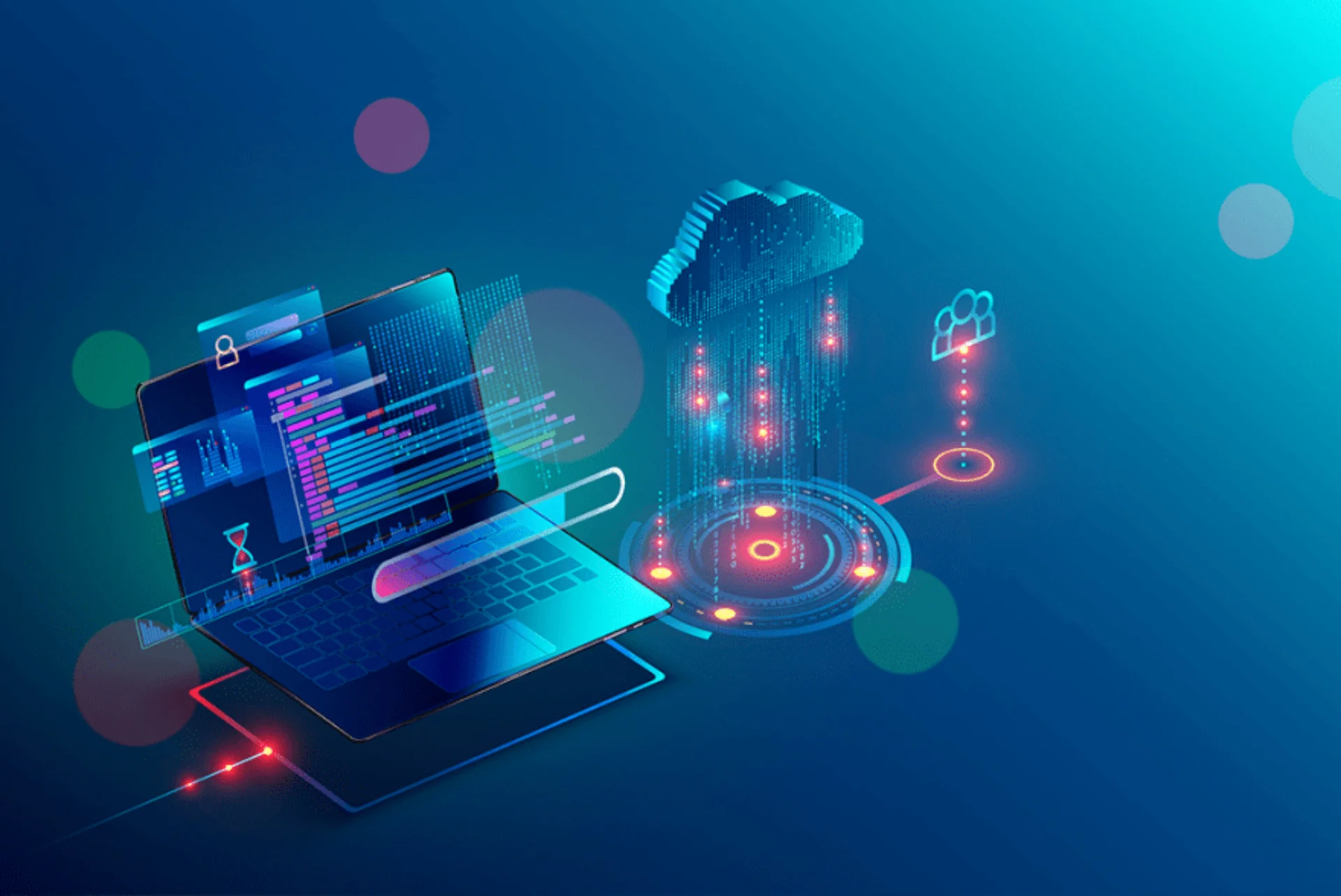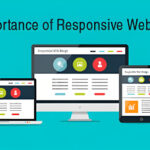Top 5 Technologies Shaping the Future of Web Development in 2023
Achieving success in the constantly changing field of web development requires remaining current with new technology. The environment of web development is changing with each passing year as a result of innovations and trends. The top five technologies that are anticipated to influence web development in 2023 will be discussed in this article. These technologies, which range from augmented reality to progressive web apps, promise to improve user experiences, boost performance, and revolutionize the way websites and web applications are created.

Progressive Web Apps (PWAs)
The popularity of Progressive Web Apps (PWAs) has grown significantly in recent years, and by 2023, they are expected to become even more prominent. PWAs give users an immersive and captivating experience by fusing the greatest elements of web pages with native mobile applications. To provide offline access, push alerts, and seamless response across several devices, these apps make use of contemporary web features. PWAs guarantee quick loading times and enhanced performance by utilizing service workers and caching strategies. They are a game-changer in web development because of their capacity to run on low-quality networks and adjust to various screen sizes.
PWAs have some benefits over conventional mobile apps. They reduce friction and make it simpler for users to access content by first removing the necessity for users to download and install apps from app stores. PWAs can be put on a user’s home screen, providing them with a native app’s look and feel without requiring them to be installed. The use of PWAs, which are updated in the background to guarantee consumers always receive the most recent version, also does away with the need for regular updates.
Additionally, PWAs minimize development and maintenance costs by delivering a consistent user experience on a variety of platforms and gadgets. A single PWA that functions flawlessly across many operating platforms, such as iOS, Android, and Windows, can be created by developers. Cross-platform interoperability makes the development process simpler and expands the market for enterprises.
The capacity of PWAs to operate offline or in bad network conditions is another important benefit. PWAs can save and load necessary resources by utilizing caching technologies, allowing users to view content even when they are offline. In places with spotty or restricted internet connectivity, this feature is especially helpful. PWAs synchronize data in the background when the network connection is reestablished, guaranteeing a seamless and uninterrupted experience.
Voice User Interface (VUI)
Voice User Interface (VUI) is a quickly developing technology that is revolutionizing the web development industry. Voice interactions have increased in popularity as a result of the development of virtual assistants and smart speakers in our daily lives. With VUI, users can use voice commands to navigate webpages and web apps rather than utilizing more conventional input techniques like typing or clicking.
By enabling voice-based user interfaces, the main objective of VUI is to offer a natural and intuitive user experience. For accurate interpretation and processing of user commands, this technology uses automatic voice recognition (ASR) and natural language understanding (NLU) algorithms. The ability of VUI systems to comprehend and react to user inputs is constantly being improved through the application of cutting-edge machine-learning techniques.
The use of VUI in web development has many advantages. It improves accessibility in the first place by making it easier for people with poor vision or limited mobility to interact with websites and Web Development apps. Instead of using manual entry techniques, users can just speak their requests, making the web more accessible and user-friendly.
Additionally, VUI provides a hands-free and eyes-free experience, which is beneficial when users are unable to physically interact with a device. Users can use voice commands, for instance, to access information or carry out tasks on websites while driving, all without taking their hands off the wheel or their eyes off the road. This feature of VUI ensures safety while also enhancing convenience.
VUI’s potential for quicker and more effective interactions is another major benefit. It can take a while to type or navigate through menus, especially on mobile devices with tiny screens. By allowing users to speak their requests directly, VUI streamlines the process. VUI improves the user experience and helps users save time when doing tasks on websites, including information search, order placement, and action initation.
Web developers can take advantage of VUI technology’s potential as it develops to build more individualized and contextually aware experiences. Websites can adjust to unique user preferences and offer specialized recommendations by combining voice recognition and natural language processing. For instance, an e-commerce website may make product recommendations based on a user’s past purchases or voice-activated preferences. User engagement and consumer satisfaction are improved by this level of personalization.
Artificial Intelligence (AI) and Machine Learning (ML)
The fields of artificial intelligence (AI) and machine learning (ML), respectively, are changing web development. The development of computer systems that can recognize speech, make decisions, and solve problems—tasks that traditionally require human intelligence—is referred to as artificial intelligence (AI). On the other hand, ML is a branch of AI that focuses on building models and algorithms that can learn and make judgments or predictions based on information.
The integration of AI and ML in web development has the potential to greatly improve user experiences by making them more intelligent, personalized, and effective. Websites and Web Development apps can now offer specialized information, suggestions, and services because of these technologies’ ability to analyze enormous amounts of data and extract insightful knowledge.
The use of chatbots and virtual assistants is one key way that AI and ML are being applied to web development. By simulating human-like dialogues, chatbots powered by AI and ML can offer real-time consumer care and help on websites. These chatbots are capable of comprehending user requests, offering pertinent data, and even acting on the user’s behalf. Chatbots can continuously improve their responses and more precisely comprehend user intent by combining natural language processing and machine learning.
Content recommendation systems are a different area where AI and ML have a big impact. Websites can use user information, including browsing habits, preferences, and interactions, to produce tailored suggestions. AI and ML algorithms can propose appropriate information, goods, or services by examining trends and user behavior. This increases user engagement and promotes conversions. In addition to enhancing user experiences, this level of personalization boosts client retention and happiness.
Web developers may also automate and optimize a variety of operations thanks to AI and ML. For instance, AI-powered algorithms can examine user behavior and website performance indicators to pinpoint problem areas and enhance the operation and look of websites. Websites can anticipate user demands and offer proactive solutions by using ML algorithms in predictive analytics.
Internet of Things (IoT) The Internet of Items (IoT)
The Internet of Things (IoT) is a ground-breaking idea that describes a network of actual physical objects, including machines, cars, appliances, and other items, that are equipped with sensors, software, and connectivity to collect and share data. IoT is having a big impact on web development and has the potential to change many aspects of our life.
IoT in the context of web development offers a wide range of opportunities for developing intelligent and linked experiences. Web developers can use the data gathered by these devices to improve user experiences, automate procedures, and offer real-time insights by connecting common objects to the internet.
Home automation is one area where IoT has a significant impact. IoT-enabled smart homes allow users to remotely control a variety of components of their living space. IoT-enabled smart homes offer convenience, increased comfort, and energy economy by managing everything from appliances and entertainment systems to temperature, lighting, and security system adjustments. The smooth interaction between users and their IoT devices and the ability to customize home automation experiences are made possible by the development of user-friendly interfaces and platforms by web developers.
IoT also has a big impact on sectors including manufacturing, transportation, and healthcare. IoT devices and sensors in the healthcare industry can gather patient data, monitor vital signs, and enable remote patient monitoring, improving healthcare results and enabling more individualized therapies. IoT technology can improve traffic management, track vehicle performance, and increase driver safety in the transportation sector. IoT gadgets can help with inventory management, proactive maintenance, and real-time equipment monitoring in the manufacturing industry.
From a web development perspective, creating robust and secure IoT applications involves dealing with challenges such as data management, interoperability, and security. Developers need to ensure the smooth integration of IoT devices with Web Development platforms and databases, enabling seamless data flow and analysis. They must also implement robust security measures to protect user privacy and safeguard against potential threats or unauthorized access.
Augmented Reality (AR) and Virtual Reality (VR)
Two cutting-edge technologies that have seen significant growth recently are augmented reality (AR) and virtual reality (VR). They are redefining how we interact with digital material and developing immersive experiences that meld the real and virtual worlds together.
In augmented reality (AR), digital elements are incorporated into the physical world to improve our view of and interaction with it. Devices like smartphones, tablets, or AR glasses can be used to do this by superimposing virtual items or information on the view of the real environment. With the help of augmented reality (AR), users may view and interact with virtual content in a context-relevant way, improving the user experience.
AR and VR have created new opportunities for narrative and content consumption in the entertainment sector. Live performances or events can have digital information and effects added to them via augmented reality, giving audiences engrossing and engaging experiences. Contrarily, VR enables viewers to actively engage in immersive narratives, whether they are exploring virtual worlds, going to virtual concerts, or viewing 360-degree videos.
The use of AR and VR in education and training has also changed these fields. By superimposing digital data onto textbooks, augmented reality (AR) may create interactive and interesting learning experiences. On the other hand, virtual reality (VR) makes it possible for learners to practice and master new skills in realistic and secure surroundings.
Conclusion
The introduction of new technology drives the ongoing evolution of the dynamic sector of web development. The future of web development will be shaped by progressive web apps, voice user interfaces, artificial intelligence, machine learning, the Internet of things, augmented reality, and virtual reality in 2023. By embracing these technologies, web designers will have the tools necessary to create cutting-edge, interactive, and user-focused websites and online applications. Developers can make sure they stay at the forefront of the rapidly evolving web development industry by remaining updated and adjusting to these changes.


